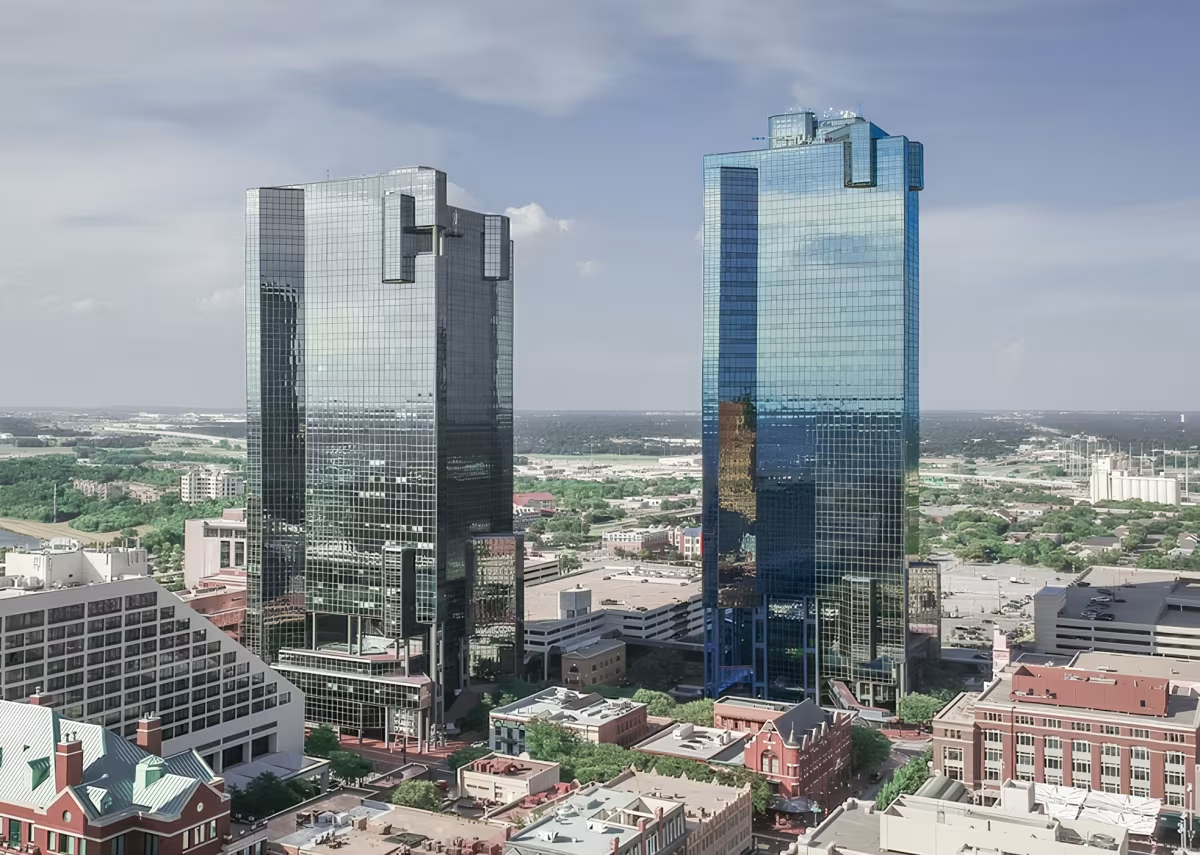Bank of America Tower vs Wells Fargo Tower


Comparing the Bank of America Tower and the Wells Fargo Tower is especially interesting because they share much in common. Both rise in Fort Worth, TX both were designed by Paul Rudolph, and they were completed within 2 years of each other.
This overlap gives us a unique opportunity to understand how Paul Rudolph approached different commissions in the same urban context and historical context during a short period.
Height & Size
The Bank of America Tower is clearly the larger tower of the two, both in terms of height and number of floors. It rises to 548ft (167m) with 38 floors above ground, while the Wells Fargo Tower reaches 476ft (145m) with 33 floors above ground.
Of course, each project may have faced different briefs or regulatory constraints, which we don't really know about and could also explain the outcome.
Architectural Style
Both the Bank of America Tower and the Wells Fargo Tower were designed in line with the aesthetic conventions of the Postmodernism style.
At the time, this style was at the height of its popularity. So Paul Rudolph followed what was in many ways expected at the time, producing designs that fit comfortably within contemporary architectural norms rather, than breaking with convention.
Uses
Both the Bank of America Tower and the Wells Fargo Tower were designed to serve as commercial towers, and that has remained their main use since their completion, serving similar roles in the urban fabric.
Both towers provide significant parking capacity, with Bank of America Tower offering 1000 spaces and the Wells Fargo Tower offering 1000.
Structure & Facade
Both the Bank of America Tower and the Wells Fargo Tower rely on a Frame structural system.
A frame structure uses a grid of columns and beams to carry the building's loads. This frees the walls from structural duties, allowing for flexible floor plans and larger windows.
They also employ the same type of facade, a Curtain Wall facade.
A curtain wall is a non-load-bearing facade hung from the structural frame. It is anchored to floor slabs and transfers only its own weight and wind loads, allowing for sleek, glassy exteriors.
| Bank of America Tower | Wells Fargo Tower | |
|---|---|---|
| Paul Rudolph | Architect | Paul Rudolph |
| 1978 | Construction Started | 1978 |
| 1984 | Year Completed | 1982 |
| Postmodernism | Architectural Style | Postmodernism |
| Commercial | Current Use | Commercial |
| 38 | Floors Above Ground | 33 |
| 167 m | Height (m) | 145 m |
| 83,613 m² | Usable Area (m²) | 66,890 m² |
| 12 | Number of Elevators | 13 |
| Frame | Structure Type | Frame |
| Steel | Vertical Structure Material | Steel |
| Concrete And Steel | Horizontal Structure Material | Concrete And Steel |
| No | Facade Structural? | No |
| Glass | Main Facade Material | Glass |
| Linbeck Construction Company | Main Contractor | Linbeck Construction Company |
| Bass Brothers Enterprises, And City Center Incorporated | Developer | Bass Brothers Enterprises, And City Center Incorporated |
| Calvin Kort | Elevator Company | Calvin Kort |
| 3D/International | MEP Engineer | 3D/International |
| CBM Engineers, And Joseph Colaco | Structural Engineer | CBM Engineers, Inc., And Joseph Colaco |
| Halbach Dietz Architects | Interior Designer | Halbach Dietz Architects |
| TX | State | TX |
| Fort Worth | City | Fort Worth |
| 301 Commerce Street | Address | 201 Main Street |